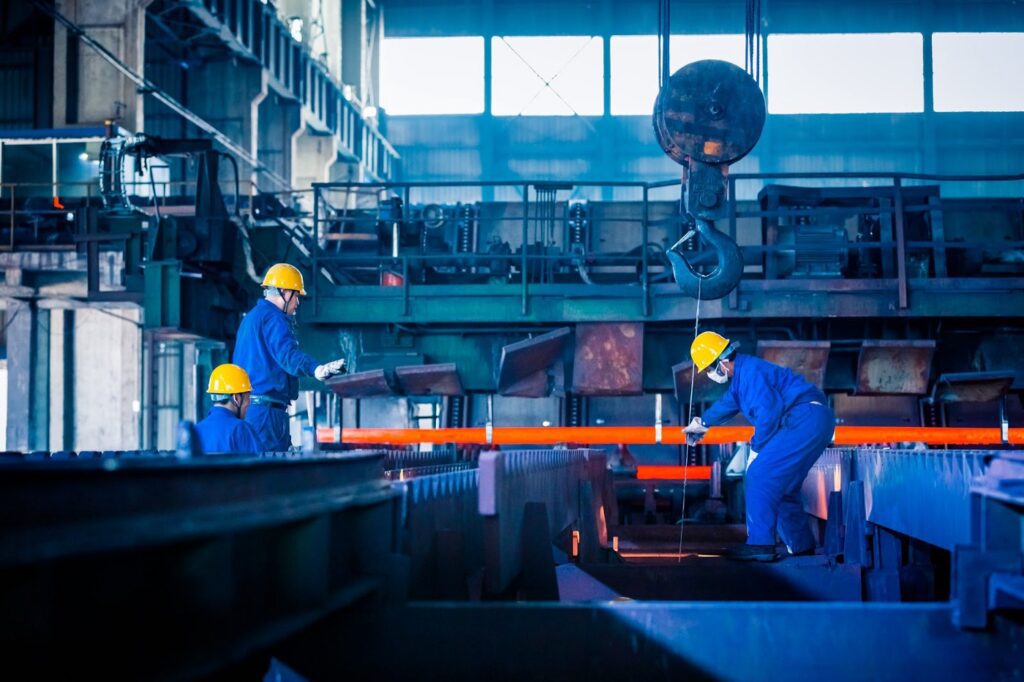Digitalization is key for improving industrial safety; it contributes to visibility and allows industries to create safer and more productive workplaces for their teams.
When talking about technology, especially related to industry, we think of it as a way to improve processes. But digitalization mostly contributes to increase visibility and data, allowing industries to enhance safety for their teams.
Industry remains a non-digital space.
Imagine going back to a world where everything is done by paper and pen. At your workplace, you write thing down in different sheets, and it is the only place where operational information is stored. If you need to analyze data for strategic decision making, you grab all those papers, put them together and start joining the dots and making the connections.
If you need to do an employees recount, you have to pick a handwritten list and start scrolling through the names, counting with your fingers to see if someone is missing. You can’t just write the name on a searching box and click. Keep eye scrolling, please. And, hey! Someone just fell! Call 911! Wait. In this particular world, there is no phone. You got to start shouting and running till a manager hears you. Meanwhile, your colleague is still hurt and laying on the floor.
That’s how industrial factories looked like in 1910. And that’s how they still look like today. Production processes have been technologically improved throughout the years, but industrial teams still operate in a similar way that workers from three generations ago. Consequently, they have a ratio of accidents of 1 per 100 workers each year, with costs that can ascend to more than USD 280,000 per accident. It is an analogical and offline world, full of risks, which the rest of us are not used to.
How does safety work in a non digital world?
In order to be safe, workers must wear their PPEs (personal protective equipment) and follow safety golden rules established by authorities. But, nowadays, they still don’t count with technology and digitalization to enhance safety. Safety golden rules, also called life saving rules, have been created by companies to improve safety at work, and are redesigned annually based on feedback. Workers are compelled to obey them and can be suspended if it is proven they operated violating one of them. Some of these life saving rules involve high risk situations, protective equipment, confined spaces and work at height, among others.
On the other hand, we have office or “deskbound” workers. People that use their phone from the minute they wake up till they go to sleep. Meetings, workflows, documents, deadlines, everything is registered and done online. They can even spend months without touching a pen, and their daily life is measured online with metrics, data and analytics. Product improvements and pivots can be easily done and settled, as they count with information that leads to decisions.
They are digitialized workers. Industrial ones are not. And this gives them a huge disadvantage.
Digitalization enhances visibility, and therefore, safety
We tend to think digitalization has arrived in industrial fields in order to just revolutionize processes, or worse, to replace human work. But that is not accurate. Digitalization brings visibility, thanks to data. It brings, above all, knowledge. And knowledge is power.
By applying technologies such as IoT, IA and a variety of digital improvements, you get to empower industrial workers and managers, giving them the tools to boost their operation and achieve better practices. And this is reflected both in performance as it is in safety. Some of these improvements include IoT devices with alarms, panic buttons and sensors, that can detect work in height, falls, maximum speeds, etc. Rules can be created on digital platforms, setting desired answers and assigning responsibles for each event. Some of them even have alarms that are triggered when a dangerous event happens. Finally all this data can be integrated in softwares the company already has.
Embracing the opportunity digitalization offers
This way, leaders get to know what happened and why, allowing them to make strategic decisions in the future. They can redesign and achieve a better compliance of safety golden rules, all aimed towards improving occupational safety. 75% of industrial accidents are due to human factors. What would happen if we could give them the tools they need in order to embrace and always apply life saving rules, some of them without even thinking?
Safety golden rules are based on feedback and experience. It is time to start embracing the opportunities digital improvements have brought, and be able to hold the complete information of our operation on a screen, collected, combined and analyzed. That’s when we will be able to protect our teams in a better way, and visualize our weak points, turning them into opportunities for a brighter future.

